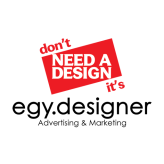The patient should be able to summarize whatever he has learned throughout the sessions. Patients are taught to record each and every activity hour by hour on the activity schedule. P ratings indicate how enjoyable the activity was, and M ratings how much of an achievement it was. Hence, M should be explained as “achievement how you felt at the time of doing.” Patients are instructed to rate activities immediately and not retrospectively. Detailed history of patient is necessary, including patients premorbid personality. Patient’s perception about the situation at the onset of symptoms might provide useful information about underlying cognitive distortions.
She desires good grades, and it would be good to have them, but it hardly makes her worthless. Some people irrationally assume they are failures if they are not loved by everyone they know – they constantly seek approval and repeatedly feel rejected. All their interactions are affected by this assumption so that a great party can leave them dissatisfied because they don’t get enough compliments. Situated at the top of the triangle, thoughts serve as the cognitive foundation.
Video: Talking therapies for stress, anxiety and depression
CBT is one of the most frequently used tools in the psychologist’s toolbox. Though it’s based on simple principles, it can have wildly positive outcomes when put into practice. During the sessions, you’ll work with your therapist to break down your problems into their separate parts, such as your thoughts, physical feelings and actions. It’s most commonly used to treat anxiety and depression, but can be useful for other mental and physical health problems. Patient with severe depression with psychosis and/or suicidality might be difficult to manage with CBT alone and need medications and other treatment before considering CBT.
Please let us know about your experiences with CBT in the comments section. Are there any other helpful exercises or techniques that we did not touch on in this piece? If you find yourself immediately thinking a negative thought when you see something new, such as entering an unfamiliar room and thinking “I hate the color of that wall,” give reframing a try (Anderson, 2014). This simple technique can introduce more positivity into your life, and our Pleasant Activity Scheduling Worksheet is designed to help.
Cognitive Behavioral Therapy (CBT): Types, Techniques, Uses
CBT focuses on finding ways to change current thought patterns and behaviors that are negatively impacting your life. It often helps you get better over time, but the process can be difficult. Don’t worry if you cry during a session — it can be a typical experience during therapy.
Beck found that a combination of cognitive therapy and behavioral techniques produced the best results for his clients. In describing and honing this new therapy, Beck laid the foundations of the most popular and influential cognitive behavioral therapy form of therapy of the last 50 years. Sometimes patients with depression might have adapted a coping strategies which make them feel good for short duration (e.g., alcohol consumption) but might be unhealthy in long term.
Cognitive emotional behavioral therapy
CBT helps people to examine how they make sense of what is happening around them and how these perceptions affect the way they feel. So if you are struggling with negative automatic thoughts, please consider these tips and techniques and give them a shot. Likewise, if your client is struggling, encourage them to make the effort, because the payoff can be better than they can imagine. However, as is https://ecosoberhouse.com/ the case with many treatments, they depend on you (or your client) putting in a lot of effort. We encourage you to give these techniques a real try and allow yourself the luxury of thinking that they could actually work. In this post, we offered many techniques, tools, and resources that can be effective in the battle against depression, anxiety, OCD, and a host of other problems or difficulties.

